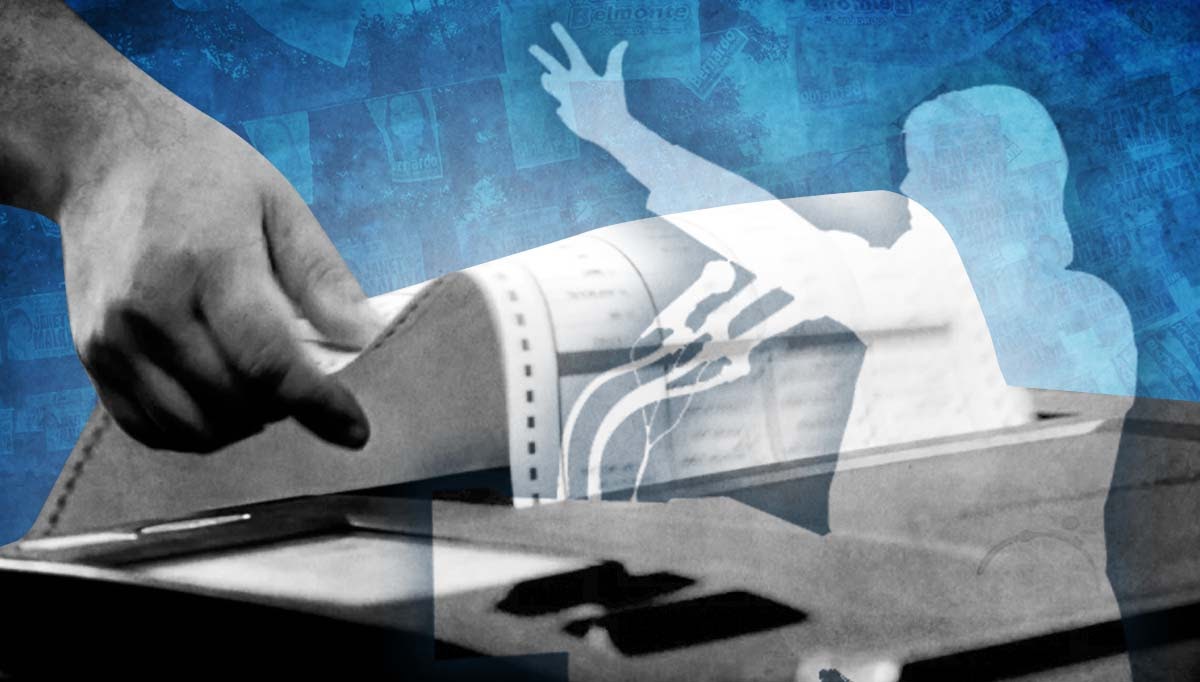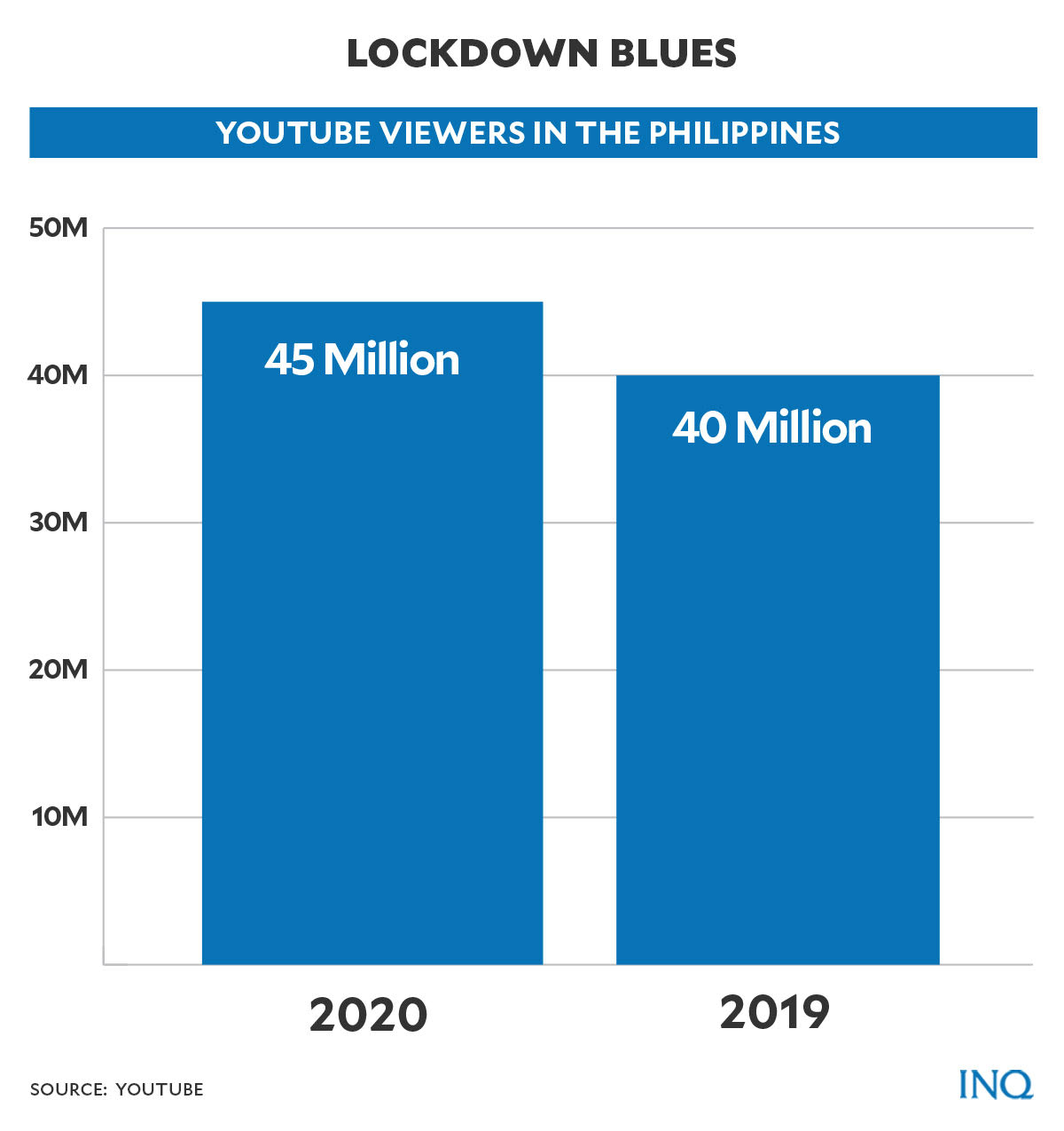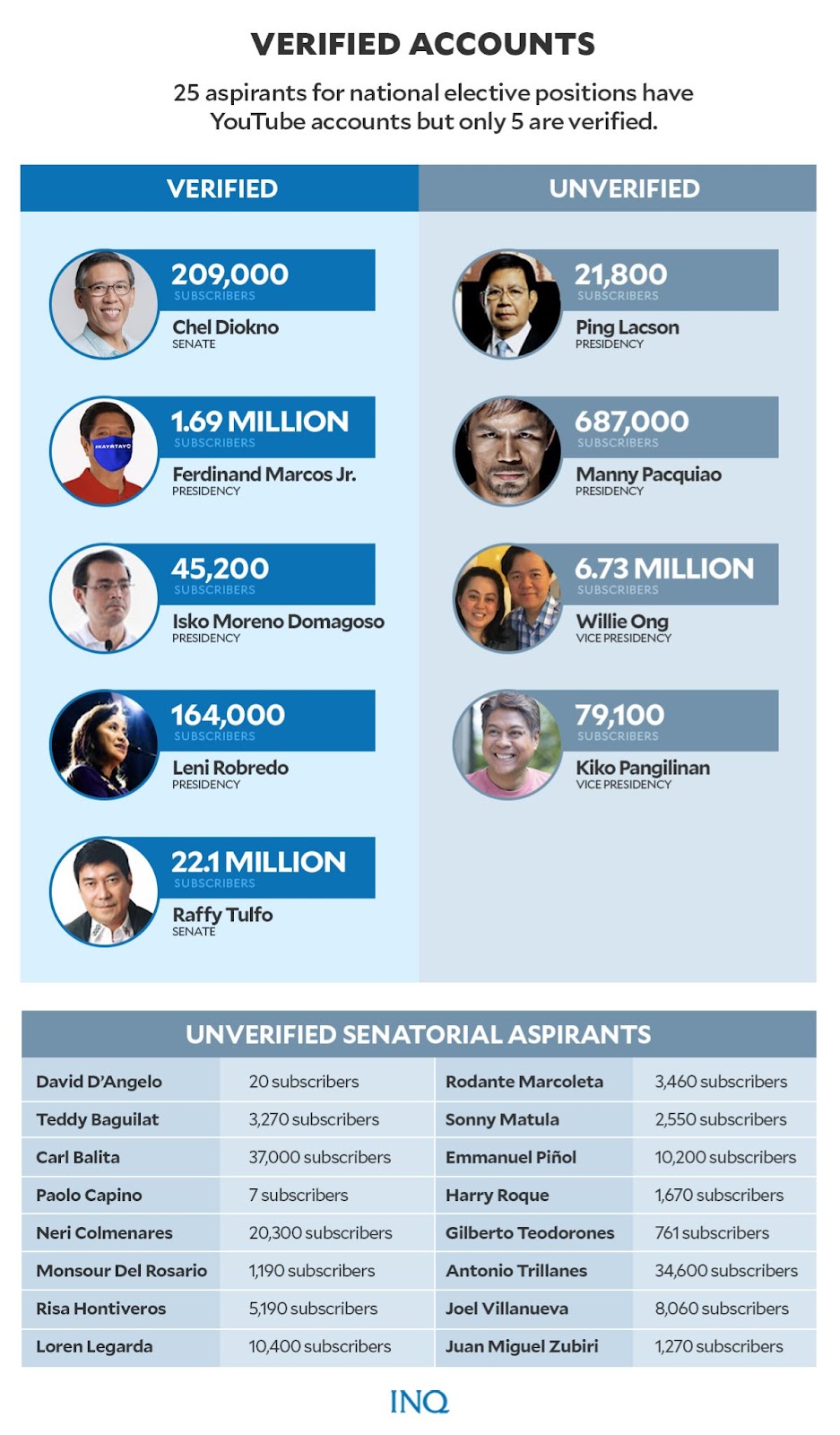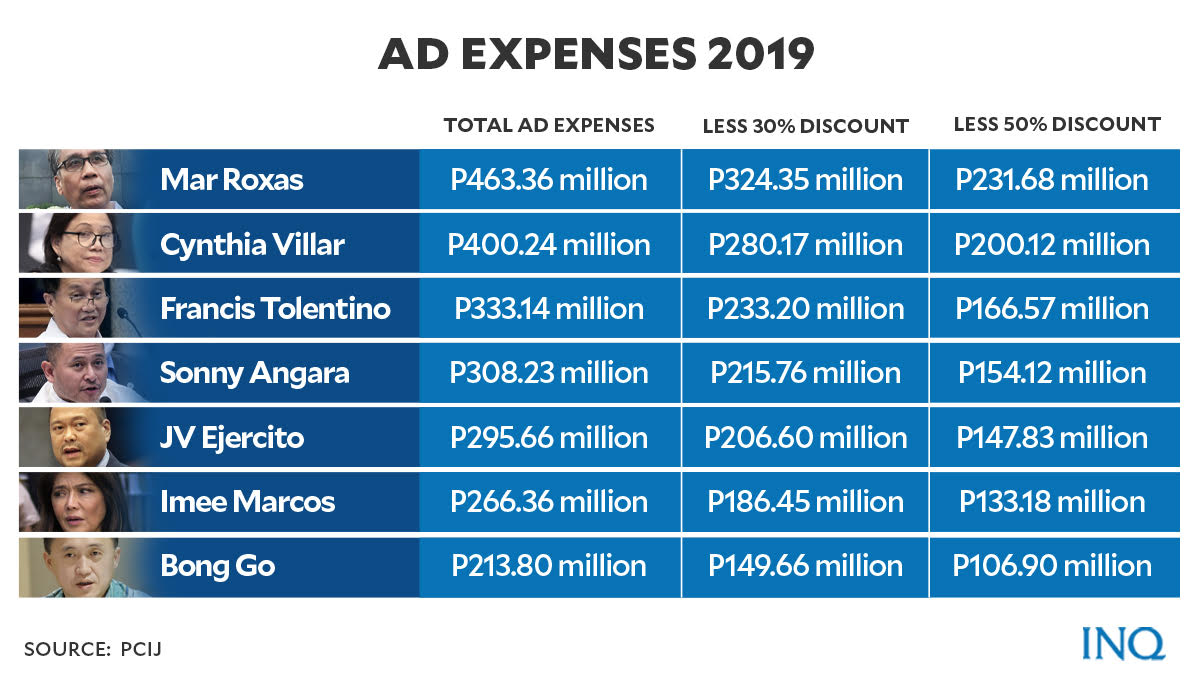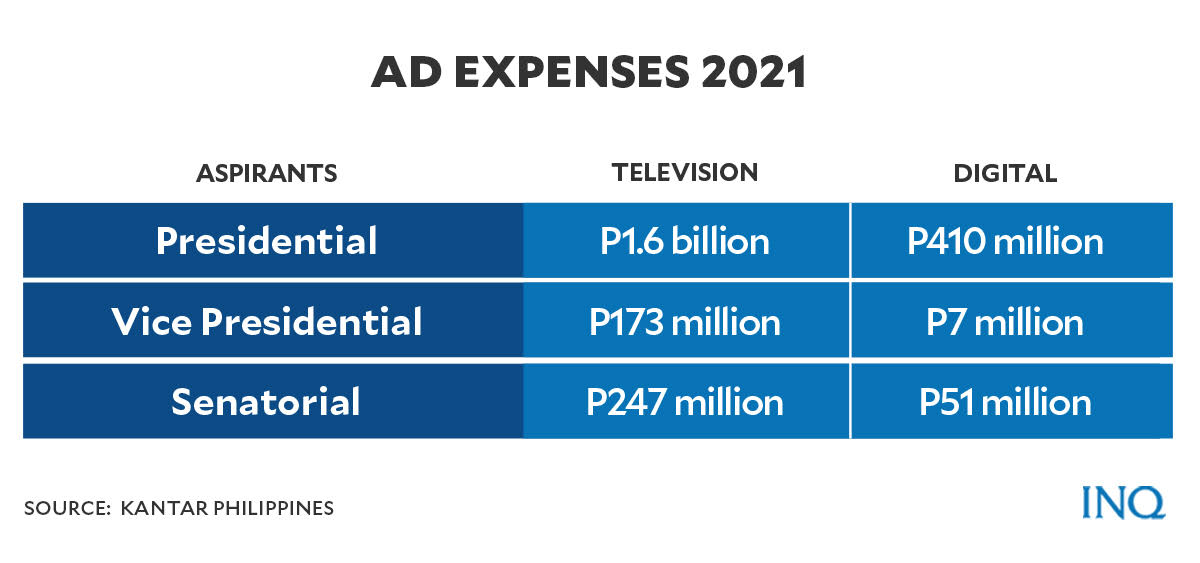The altered face of political advertising in COVID era
MANILA, Philippines—The COVID pandemic has altered the way people entertain themselves and keep up-to-date on news, but its impact on politics could be game-changing.
In 2020, when the pandemic reached Philippine shores, lockdowns kept tens of millions of people indoors and opened the windows on the dominance of online platforms for entertainment and news.
That year, at least 45 million people in the Philippines tuned in to YouTube for content. This was significantly higher than the 40 million people in the Philippines who tuned in to YouTube in 2019.
Last Oct. 12, a Pulse Asia survey said YouTube fell only second to Facebook as the most popular digital site in the Philippines. Facebook had a viewership share of 99 percent of all people tuned in online. YouTube had 57 percent.
Other sites enjoyed popularity, too, but not as massive as Facebook and YouTube—TikTok had 17 percent audience share, Instagram had 14 percent and Twitter had 8 percent.
Article continues after this advertisementThis could be the reason YouTube is becoming the “go-to” site for people seeking elective posts in 2022, especially in the middle of COVID restrictions and following the shutdown of ABS-CBN in 2020.
Article continues after this advertisementREAD: ‘Don’t tempt the gods’: Duterte asks Comelec for rules to prevent campaign crowding
Neri Colmenares, former Bayan Muna representative now aspiring for a Senate seat, told INQUIRER.net that YouTube is having a significant impact especially on candidates who can’t pay expensive ad rates in traditional media, like TV.
But in Resolution No. 10730, the Commission on Elections (Comelec) said only “verified” accounts, web pages, blogs or other social media platforms are allowed to run political ads.
READ: Comelec expands rules on pol ads run on social media
On Dec. 12, Comelec, however, said it would work with YouTube to help candidates get a badge of verification. A lawyer, Emil Marañon, said this was unconstitutional, though.
READ: Comelec teaming up with YouTube for verification of candidates’ channels
“Comelec is requiring that only platform-verified social media accounts can be used for the campaign,” he said.
Comelec is requiring that only platform-verified social media accounts can be used for the campaign. I still think that this is unconstitutional. As for YouTube, it requires a minimum of 100,000 subscribers to be verified, this is why we are asking help from you.
— Emil (@13thFool) December 11, 2021
“I still think that this is unconstitutional. I just hope the Comelec wakes up from this madness and reconsiders this very arbitrary policy,” he said.
INQUIRER.net looked at the existing YouTube accounts of 25 individuals with national election bids. Out of the 25, only five accounts have been verified—those of Chel Diokno, Ferdinand Marcos Jr., Isko Moreno, Leni Robredo and Raffy Tulfo.
- Atty. Chel Diokno, Senate: 209,000 subscribers
- Ferdinand Marcos Jr., presidency: 1.69 million subscribers
- Isko Moreno Domagoso, presidency: 45,200 subscribers
- Leni Robredo, presidency: 164,000 subscribers
- Raffy Tulfo, Senate: 22.1 million subscribers
Colmenares has 20,300 subscribers. Recently, he and Sen. Kiko Pangilinan, who is seeking the vice presidency with 79,100 subscribers, asked Filipinos to help them reach 100,000 to reach the threshold for verification by YouTube.
READ: Comelec’s Jimenez defends ‘misunderstood’ rule on social media account verification
These other aspirants for president and vice president also have popular YouTube accounts which have not been verified:
- Ping Lacson, president: 21,800 subscribers (not verified)
- Manny Pacquiao, president: 687,000 subscribers (not verified)
- Willie Ong, vice president: 6.73 million subscribers (not verified)
- Kiko Pangilinan, vice president: 79,100 subscribers (not verified)
These aspirants for Senate seats also have unverified YouTube accounts:
- David D’Angelo: 20 subscribers (not verified)
- Teddy Baguilat: 3,270 subscribers (not verified)
- Carl Balita: 37,000 subscribers (not verified)
- Paolo Capino: 7 subscribers (not verified)
- Monsour Del Rosario: 1,190 subscribers (not verified)
- Risa Hontiveros: 5,190 subscribers (not verified)
- Loren Legarda: 10,400 subscribers (not verified)
- Rodante Marcoleta: 3,460 subscribers (not verified)
- Sonny Matula: 2,550 subscribers (not verified)
- Emmanuel Piñol: 10,200 subscribers (not verified)
- Harry Roque: 1,670 subscribers (not verified)
- Gilberto Teodoro: 761 subscribers (not verified)
- Antonio Trillanes: 34,600 subscribers (not verified)
- Joel Villanueva: 8,060 subscribers (not verified)
- Juan Miguel Zubiri: 1,270 subscribers (not verified)
In its Help Center, YouTube said “sometimes, it may also proactively verify channels with fewer than 100,000 subscribers that are well-known outside of YouTube,” like Moreno’s, which only has 45,200 subscribers.
‘Cost-effective’
Colmenares, explaining that he can’t pay for “expensive ad rates,” said: “Paid ads on YouTube and other websites are crucial in getting our message across to the voters. It’s a cost-effective complement to TV and radio ads.”
This was shared by Marañon, saying that digital platforms are the most inexpensive way for individuals seeking elective posts who can’t pay for TV and radio ads which cost millions of pesos. “They are not also covered by airtime limits,” he said.
Digital marketing website WebFX said the average cost of a YouTube ad is $0.10 to $0.30 “per view or action” which means “every time someone views or engages with the ad, you pay.” The average “daily budget” is $10.
In 2019, while Republic Act No. 11207, which was signed by President Rodrigo Duterte last Feb. 15, 2019 , increased political ad discounts for TV (50 percent) and radio (40 percent) ads, the rates were still expensive.
The Philippine Center for Investigative Journalism (PCIJ) said the top seven spenders in 2019 spent P2.28 billion in total—60 percent of the total P3.77 billion that 32 of 62 senatorial candidates had spent in the first 78 days.
- Mar Roxas (for senator)
Total ad expenses: P463.36 million
Less 30 percent discount: P324.35 million
Less 50 percent discount: P231.68 million
- Cynthia Villar (for senator)
Total ad expenses: P400.24 million
Less 30 percent discount: P280.17 million
Less 50 percent discount: P200.12 million
- Francis Tolentino (for senator)
Total ad expenses: P333.14 million
Less 30 percent discount: P233.20 million
Less 50 percent discount: P166.57 million
- Sonny Angara (for senator)
Total ad expenses: P308.23 million
Less 30 percent discount: P215.76 million
Less 50 percent discount: P154.12 million
- JV Ejercito (for senator)
Total ad expenses: P295.66 million
Less 30 percent discount: P206.60 million
Less 50 percent discount: P147.83 million
- Imee Marcos (for senator)
Total ad expenses: P266.36 million
Less 30 percent discount: P186.45 million
Less 50 percent discount: P133.18 million
- Bong Go (for senator)
Total ad expenses: P213.80 million
Less 30 percent discount: P149.66 million
Less 50 percent discount: P106.90 million
This, while Republic Act No. 7166 set limits for election expenses: P10 per registered voter for those seeking the presidency and vice presidency; P3 for Senate and party-list; P5 for those without a political coalition and without backing from any political coalition and P5 for registered political coalitions in the “constituencies where it has official candidates.”
READ: Comelec: 2022 campaign restrictions meant to ensure public health, safety
The Comelec said last Nov. 18 that based on data from its Election and Barangay Affairs Department, the commission projects a total of 66.9 million registered voters in the 2022 elections.
Digital trend
Kantar Philippines, one of the leading data and insights firms in the country, told ANC that for the 2022 elections, it started looking at the digital ads of people seeking elective posts.
“It’s the first time we’re seeing how much they’re really spending online, in terms of standard advertising,” said Jay Bautista, managing director of Kantar Philippines.
He said from July to November 2021, individuals with national bids already spent millions of pesos on TV and digital ads:
- Presidency
TV: P1.6 billion
Digital: P410 million
- Vice Presidency
TV: P173 million
Digital: P7 million
- Senate
TV: 247 million
Digital: 51 million
At least 17 sites—led by Facebook and YouTube—were used for the political digital ads.
